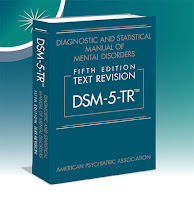
Patients with bipolar disorder may be at a greater risk for osteoporosis, but treatment with lithium could reduce that risk, according to a study published yesterday in JAMA Psychiatry.
“These findings suggest that bone health should be a priority in the clinical management of bipolar disorder and that the potential bone-protective properties of lithium should be subjected to further study, both in the context of bipolar disorder and in osteoporosis,” wrote Ole Köhler-Forsberg, M.D., Ph.D., D.M.Sc., of Aarhus University Hospital in Denmark and colleagues.
The authors used data from nationwide Danish registries, including the Danish Psychiatric Central Research Register and the Danish National Patient Register, which contain information on inpatient, outpatient, and emergency visits, including diagnoses. They identified 22,912 patients who were diagnosed with bipolar disorder between 1996 and 2019, but only patients aged 40 and older were included in the analysis to focus on what the authors noted is a period when the risk of osteoporosis increases. Each patient was matched with five individuals from the general Danish population who did not have bipolar disorder, schizoaffective disorder, or osteoporosis (the control group).
The authors identified all patients who were prescribed lithium, valproate, lamotrigine, and/or any antipsychotic. Patients were considered to have osteoporosis if they had received a formal diagnosis or filled a prescription for medication to treat osteoporosis.
The incidence rate of osteoporosis among patients with bipolar disorder was 8.70 per 1,000 person-years compared with 7.90 per 1,000 person-years in the control group. The association between bipolar disorder and osteoporosis was more pronounced among men than women.
Among patients with bipolar disorder, 38.2% received lithium, 73.6% received an antipsychotic, 16.8% received valproate, and 33.1% received lamotrigine, with some patients receiving multiple drugs. Lithium treatment was associated with a substantial and statistically significant decrease in the risk of osteoporosis compared with no lithium treatment. No such association was found for any of the other treatments.
The researchers also examined the relationship between cumulative dose of the medications and osteoporosis. Only lithium treatment corresponding to more than two years was associated with a statistically significant decrease in risk of osteoporosis, they wrote. The higher the cumulative lithium dose, the greater the decrease in risk of osteoporosis.
“[B]one health should be a priority in the clinical management of bipolar disorder,” the authors wrote. They noted that patients should be guided toward lifestyles that support bone health, such as by not smoking, reducing alcohol intake, maintaining a healthy diet, and exercising. Monitoring bone density via scans, they added, may also be warranted.
For related information, see the Psychiatric News article “Patients Taking Psychotropic Medications Found to Be at Elevated Risk of Fractures.”
Don't miss out! To learn about newly posted articles in Psychiatric News, please sign up here.




















